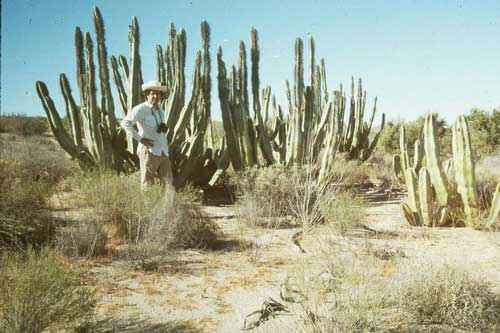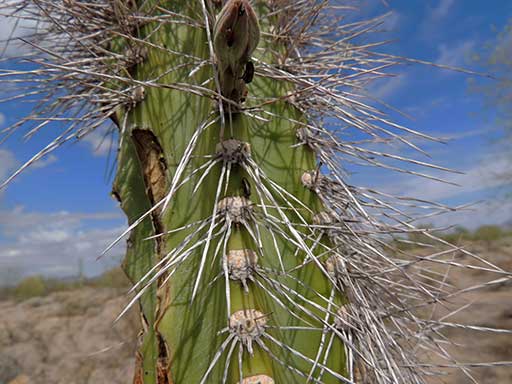Senita Cactus
Lophocereus schottii
(Cereus/Pachycereus schottii)

Photo taken at Senita Basin in Organ Pipe National Monument, Pima Co., Arizona.
Sponsored Links:

Photo taken at Senita Basin in Organ Pipe National Monument, Pima Co., Arizona.
RANGE: Restricted distribution In Arizona. Found in just a few locations
close to the Mexican border within Organ Pipe National Monument. Widespread in
Sonora, Mexico.
BRANCHING: Like Organ Pipe Cactus, Senita Cactus branches mostly at
ground level. The stems have fewer vertical ribs (usu. 7 to 9) leaving smooth
green tissue exposed between them.
SPINE CLUSTERS: Starting at about 1½
meters above ground level spine clusters include numerous, long,
bushy, hair-like spines. These dense spines apparently protect flower buds,
flowers and fruits. In the region below the hat of hair-spines
(pseudocephalium) the spine clusters consist of ten or so short, thick spines.
FLOWERS: The relatively large flowers are white-pinkish in color.
FRUIT: The nearly spherical fruit is red at maturity, but less than 3 cm
in diameter and closely guarded by dense spine clusters.